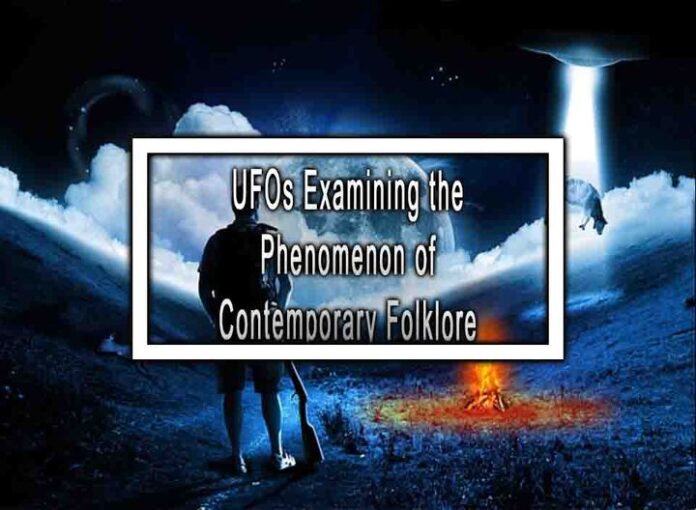The study of UFOs (Unidentified Flying Objects) as contemporary folklore is an intriguing perspective that explores the cultural and societal aspects of UFO sightings, encounters, and beliefs. Here are some key points to consider when examining UFOs as a form of contemporary folklore:
Narratives and Stories:
- UFO encounters often involve detailed narratives and stories told by eyewitnesses. These accounts are passed down through oral traditions, written accounts, and now digital media.

- UFO encounters often involve detailed narratives and stories told by eyewitnesses. These accounts are passed down through oral traditions, written accounts, and now digital media.
Cultural Significance:
- UFOs and extraterrestrial life have become deeply ingrained in popular culture. They appear in books, films, television shows, and even conspiracy theories. The portrayal of UFOs in media influences public perception.
Collective Beliefs:
- UFO sightings and beliefs about extraterrestrial life often reflect collective beliefs and anxieties of a particular culture or era. For example, during the Cold War, UFO sightings sometimes symbolized fears of nuclear conflict.
Social Communities:
- UFO enthusiasts form social communities, share their experiences, and participate in conventions and conferences. These communities help reinforce and perpetuate UFO folklore.
Adaptability and Evolution:
- UFO folklore is adaptable and evolves over time. It responds to changes in societal attitudes, technological advancements, and global events.
Mythology and Archetypes:
- UFO stories often draw from mythology and archetypal themes. They may incorporate elements of abduction, contact, and transformation, echoing ancient narratives of gods and otherworldly beings.
Conspiracy Theories:
- Some UFO folklore intersects with conspiracy theories, which often involve government cover-ups, secret alien agendas, and hidden knowledge. These narratives can be influential and shape public discourse.
Folkloric Motifs:
- UFO folklore includes recurring motifs, such as mysterious lights in the sky, encounters with humanoid beings, and tales of abductions. These motifs connect contemporary experiences with historical folk narratives.
Skeptical Perspectives:
- UFO folklore also includes skeptics and debunkers who seek rational explanations for UFO sightings. Their perspectives contribute to the ongoing dialogue about the phenomenon.
Psychological and Sociological Aspects:
- Scholars in psychology and sociology have examined UFO encounters as cultural phenomena influenced by psychology, belief systems, and social dynamics.
Popular Media:
- Television shows like “The X-Files” and documentaries have explored UFOs as a form of folklore, examining the beliefs, fears, and hopes associated with these phenomena.
Scientific Research:
- While UFO folklore is distinct from scientific investigations, it can influence public attitudes toward UFO research and scientific inquiry into the nature of unidentified aerial phenomena.
In examining UFOs as contemporary folklore, researchers explore the ways in which society constructs and perpetuates narratives about the unknown, the mysterious, and the possibility of extraterrestrial life. It provides insight into the complex relationship between science, culture, and belief systems.











